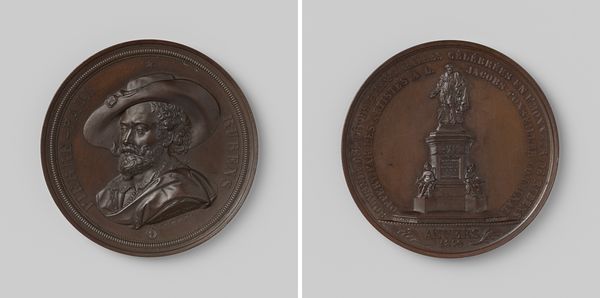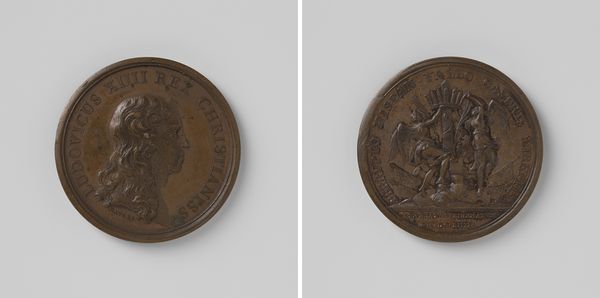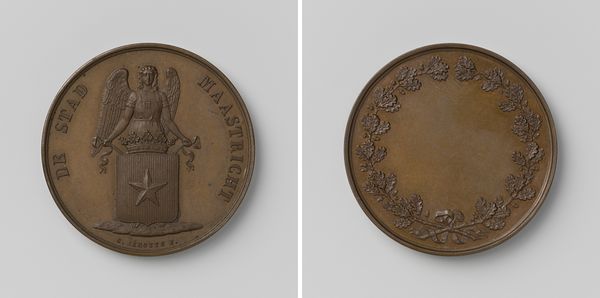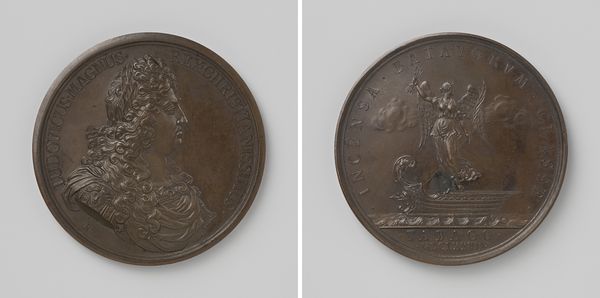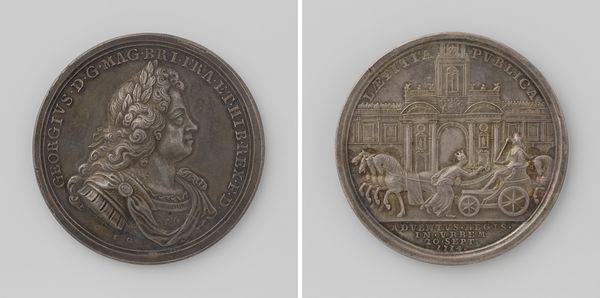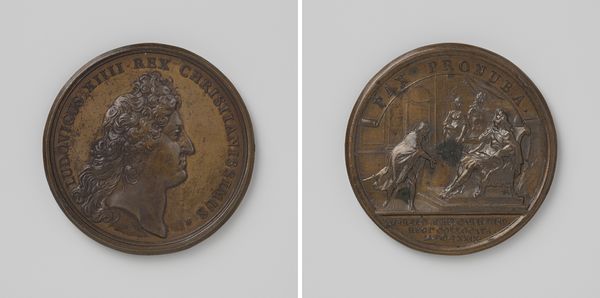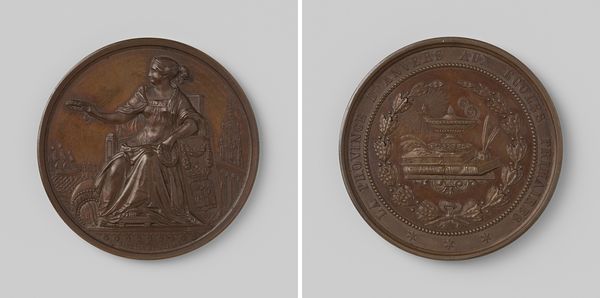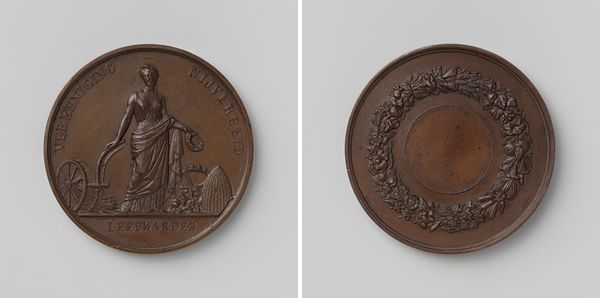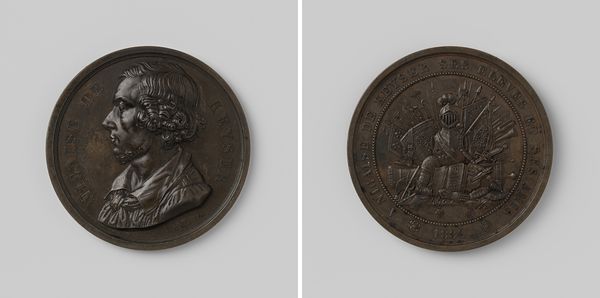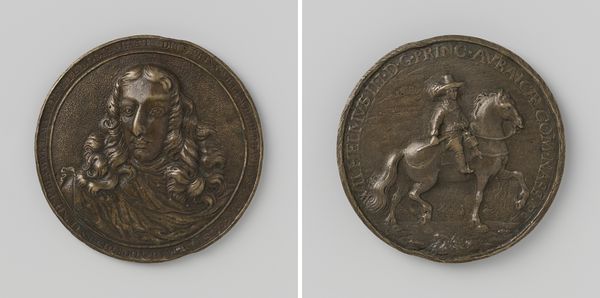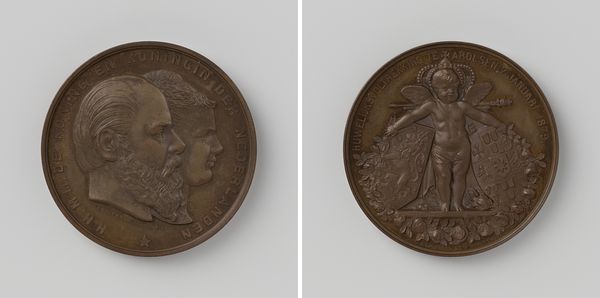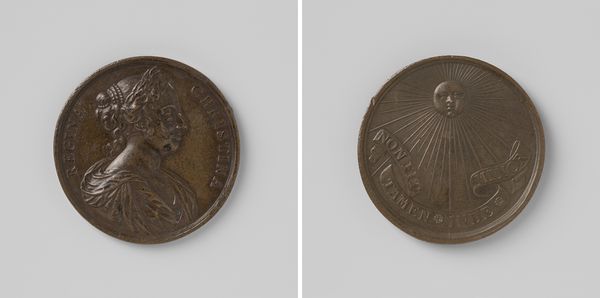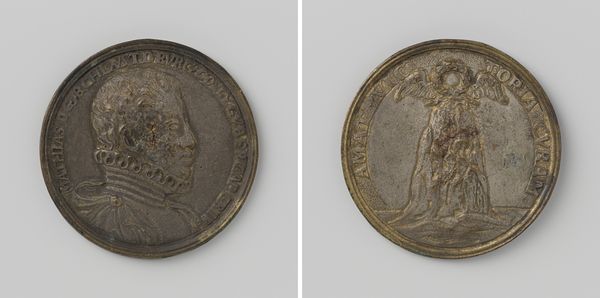
Oprichting van een standbeeld voor Moliere, door Louis Visconti 1844
0:00
0:00
print, relief, bronze, sculpture
#
portrait
#
neoclacissism
# print
#
stone
#
sculpture
#
relief
#
bronze
#
sculptural image
#
sculpture
#
statue
Dimensions: diameter 5.7 cm, weight 90.23 gr
Copyright: Rijks Museum: Open Domain
Curator: What strikes me immediately is the celebratory grandeur, almost pompousness, captured within this bronze relief. Editor: Precisely. The artwork, dating from 1844, presents "Oprichting van een standbeeld voor Moliere, door Louis Visconti"—the Inauguration of the statue of Molière. The profile portrait bears the dates 1622–1673—Molière’s lifespan—reminding us this medallion commemorates the author after a significant time. Curator: And the decision to use bronze as a medium… bronze has such weighty, enduring associations. Editor: Exactly. Bronze invokes cultural memory, echoing ancient empires, Renaissance masters... its symbolic weight enhances Moliere’s perceived importance. I would add, that bronze’s luster speaks of authority. Curator: I find fascinating how this memorial medal presents Molière, not just the man himself, but the symbolic representation of Molière through a monument. It's the act of remembering, or rather, of publicly acknowledging historical significance, rendered material. Editor: I’m particularly interested in this sculptural monument's inscription: "Inauguré en 1844." It emphasizes public endorsement and approval. Think about the Paris of 1844, under King Louis-Philippe. It's a period of consolidation and promoting specific historical narratives. Molière's comedies, which satirized aristocratic excess, have now been integrated into mainstream French culture. Curator: Yet the depiction feels somewhat divorced from the original spirit of Molière, doesn’t it? He was a playwright and satirist. But here he's revered with this staid, classically influenced design. The Neoclassical style imparts a dignity, a grandeur which… simplifies Moliere’s nuanced voice. Editor: That’s an interesting observation, his edges are indeed smoothened. Consider the role museums, public art and institutions played back then: crafting a cultural identity, selectively celebrating national icons… controlling narratives of greatness. The placement of this memorial served those purposes. Curator: It provokes questions about public art's lasting influence. Whose stories gain importance and through what symbols do we uphold them? Editor: It does offer much to contemplate, and perhaps challenges how we should perceive artistic expression today. Curator: Agreed. It brings historical commentary into the public sphere and offers an artifact representing that important transitional moment.
Comments
No comments
Be the first to comment and join the conversation on the ultimate creative platform.
